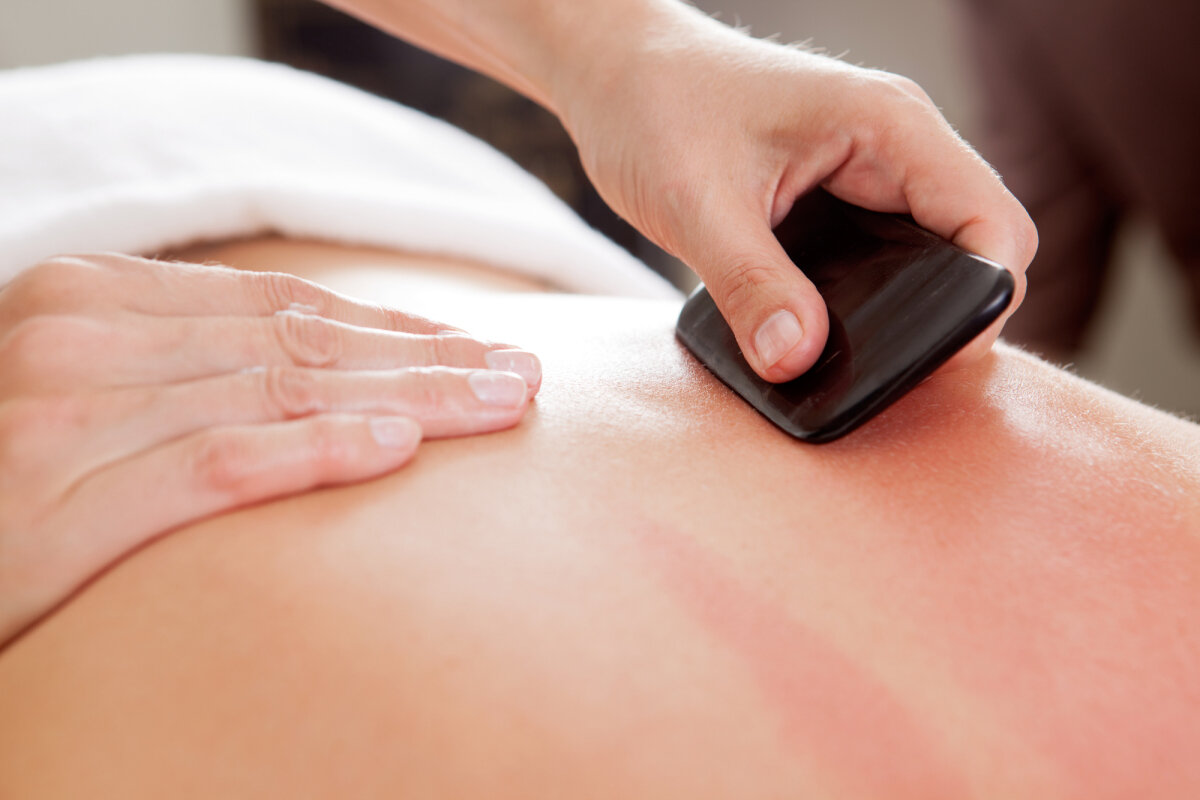Gua sha is defined as instrument-assisted unidirectional press-stroking of a lubricated area of the body surface to intentionally create transitory therapeutic petechiae called ‘sha’ representing extravasation of blood in the subcutis.
When gua press-stroking is applied in repeated even strokes, sha appears as small red dots called ‘petechiae’ and the pain immediately shifts. In minutes the small red dots fade into blended reddishness. The sha disappears totally in two to three days after treatment. The color of sha and rate of fading can indicate important information about a patient’s condition. Pain relief lasts even after the sha is completely gone.
The History
Gua sha is an over 2,000-year-old treatment that has been used as a home remedy by generations of Chinese mothers for sick children. But gua sha is not an exclusively Asian medical practice. In fact, ancient texts show that friction therapy was used widely in ancient Greece, Egypt, and India. Both Hippocrates and Galen wrote about using friction to relieve pain in diseased areas of the body.
The Science
Doppler images have been used to show in areas treated with gua sha, microcirculation is increased and pain in local and distal areas decrease. It also has “an anti-inflammatory and immune protective effect that persists for days following a single Gua sha treatment.” (Nielsen, 2013)
The Misconceptions
The greatest misconception about gua sha is that the treatment causes bruises. As Arya Nielsen (2013) pointed out, “Gua sha does not cause bruising. Bruising represents traumatic bleeding and injury to the tissue.” The red marks seen after a gua sha treatment represents the flight of red blood cells in the surface tissue. "When there is blood stasis [characterized as fixed, persistent or recurring pain], gua sha will cause the cells to go 'outside' the vessels, but they will immediately begin to be reabsorbed.”
Citation:
1. Nielsen, D. A. (2013). Gua Sha, A traditional technique for modern practice. New York, NY, USA: Elsevier Ltd.


